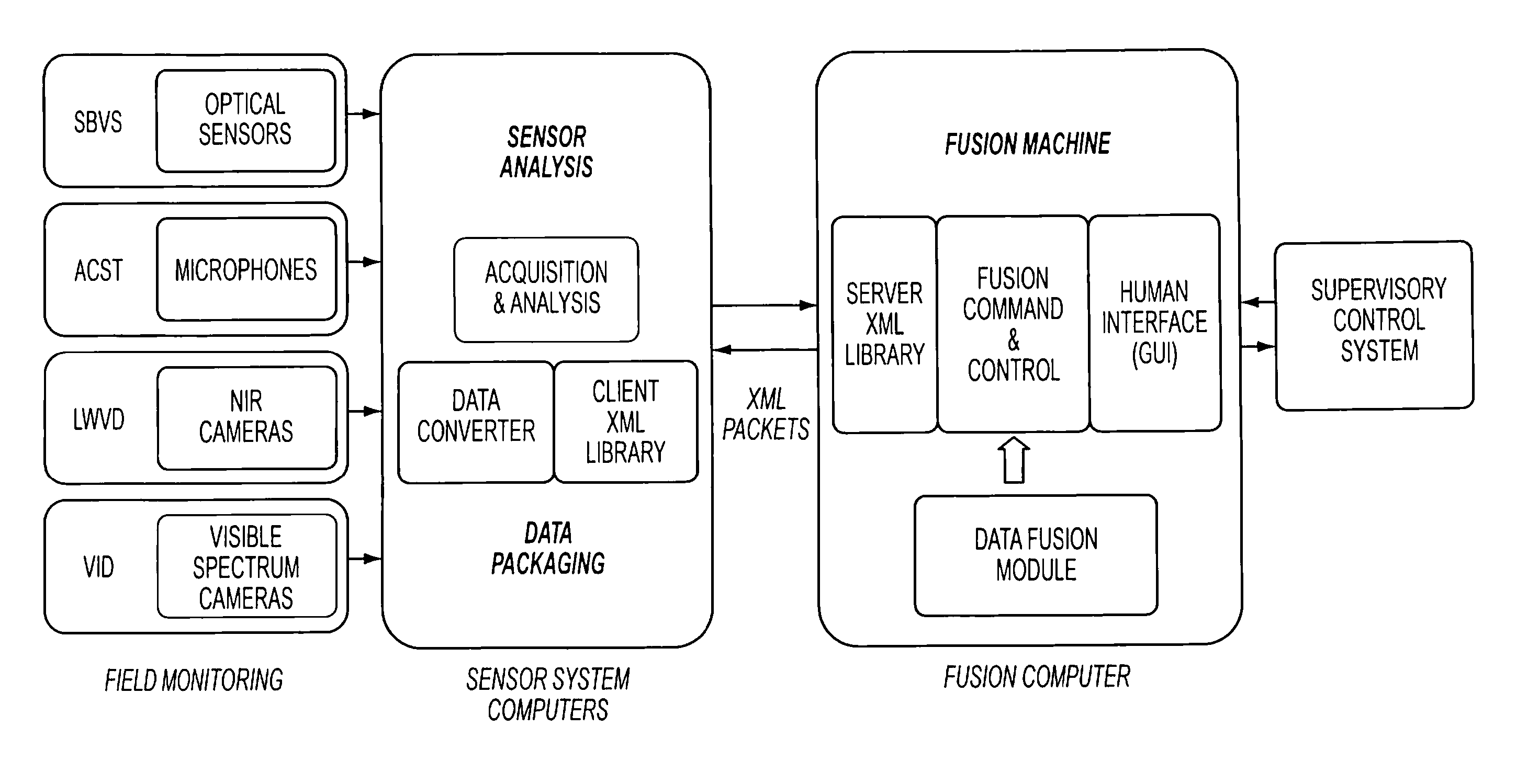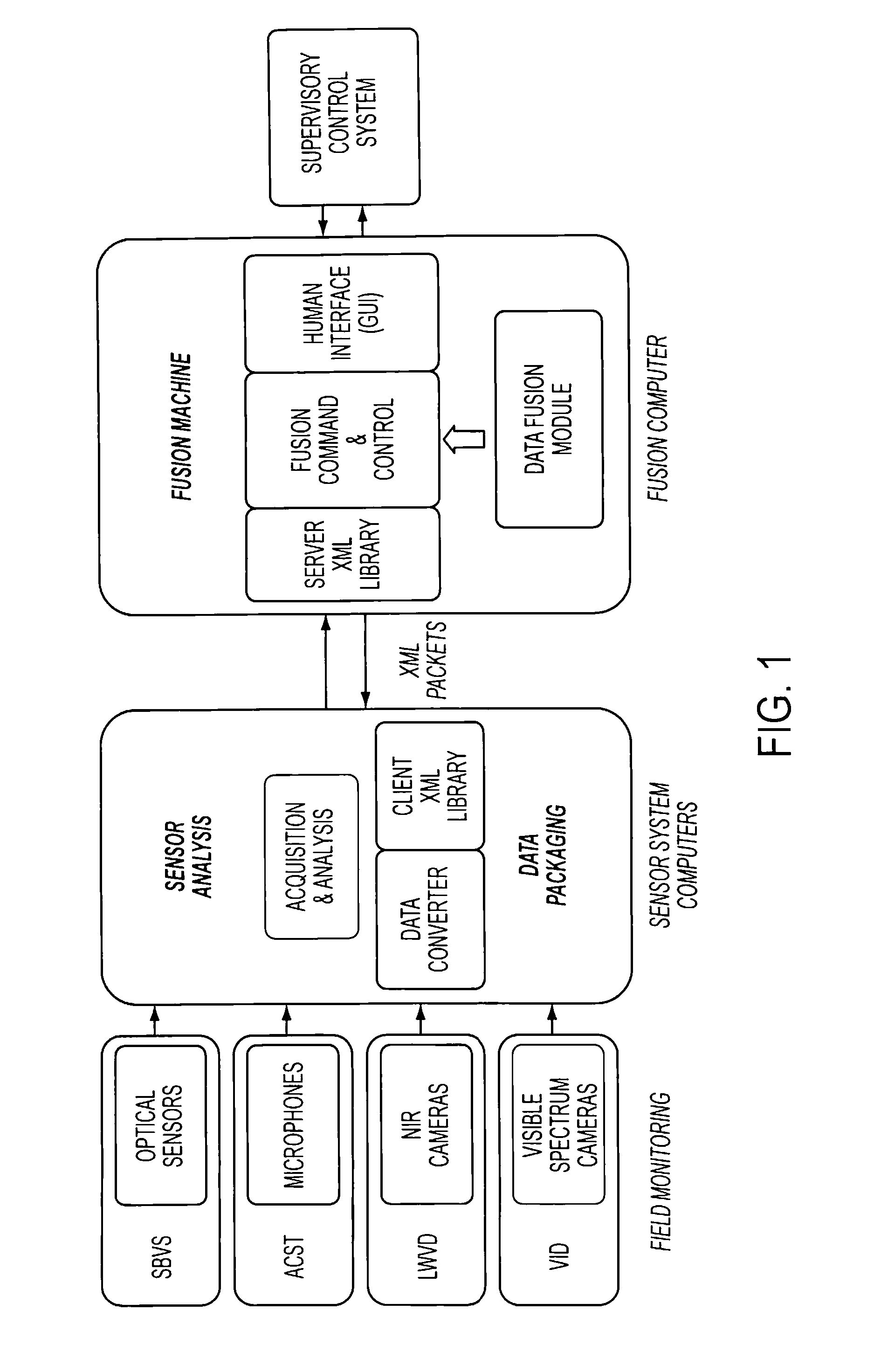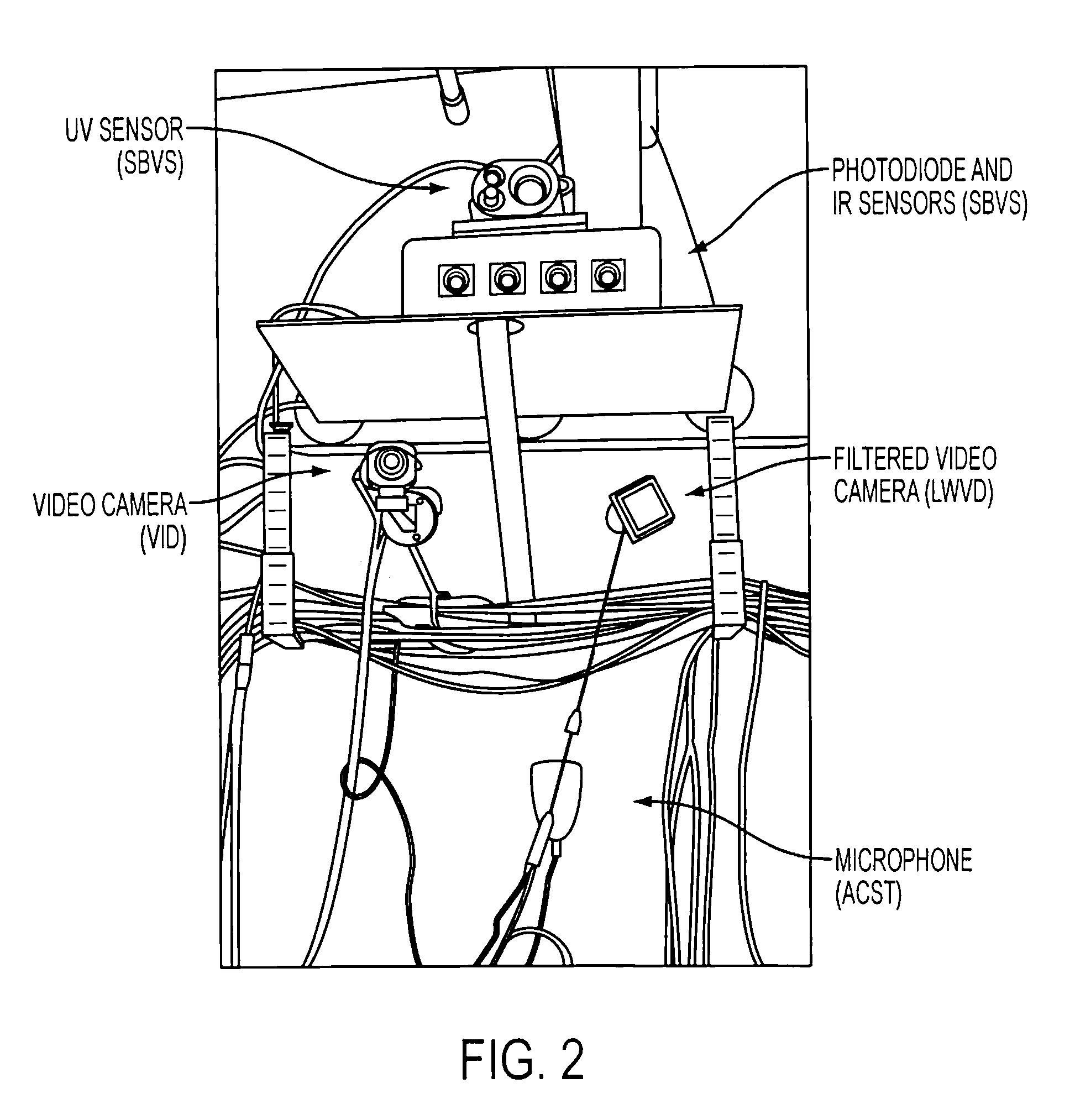Volume sensor: data fusion-based, multi-sensor system for advanced damage control
a multi-sensor system and volume sensor technology, applied in the field of volume sensor, can solve the problems of poor response time, high false alarm rate, and overall sensitivity problems
- Summary
- Abstract
- Description
- Claims
- Application Information
AI Technical Summary
Benefits of technology
Problems solved by technology
Method used
Image
Examples
Embodiment Construction
[0023] An affordable, automated, real-time detection system has been developed to address the need for detection capabilities for standoff identification of events within a space, such as fire, explosions, pipe ruptures, and flooding level. The system employs smart data fusion to integrate a diverse group of sensing modalities and network components for autonomic damage control monitoring and real-time situational awareness, particularly on U.S. Navy ships. This Volume Sensor system comprises spectral and acoustic sensors, new video imaging techniques, and image recognition methods. A multi-sensory data fusion approach is used to combine these sensor and algorithm outputs to improve event detection rates while reducing false positives, providing a system with detection capabilities for standoff identification of events within a space, such as fire, explosions, pipe ruptures, and flooding level. The Volume Sensor system required the development of an efficient, scalable, and adaptabl...
PUM
 Login to View More
Login to View More Abstract
Description
Claims
Application Information
 Login to View More
Login to View More - R&D
- Intellectual Property
- Life Sciences
- Materials
- Tech Scout
- Unparalleled Data Quality
- Higher Quality Content
- 60% Fewer Hallucinations
Browse by: Latest US Patents, China's latest patents, Technical Efficacy Thesaurus, Application Domain, Technology Topic, Popular Technical Reports.
© 2025 PatSnap. All rights reserved.Legal|Privacy policy|Modern Slavery Act Transparency Statement|Sitemap|About US| Contact US: help@patsnap.com



